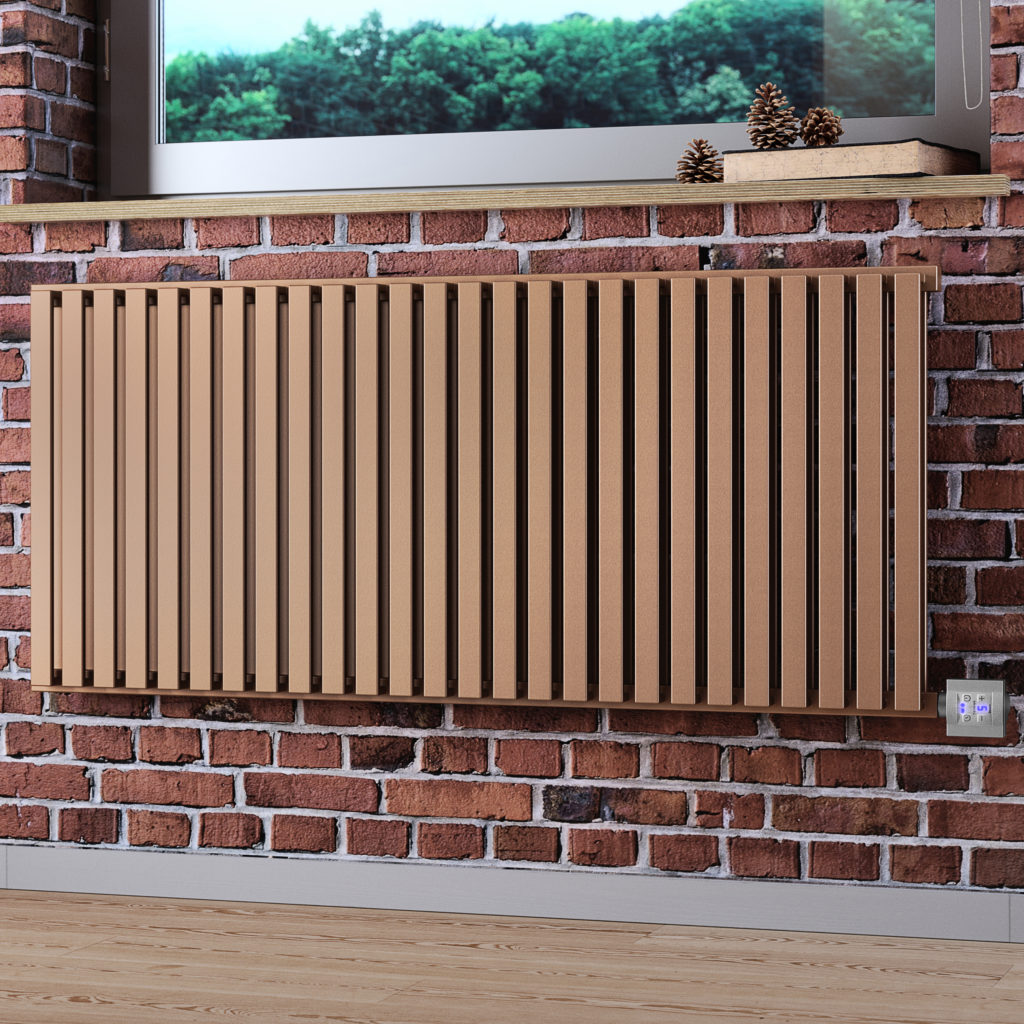Go Green with the Best Electric Radiators
An Eco-Friendly Heating Solution
With climate change threatening our planet, many people are looking for eco-friendly solutions to reduce their carbon footprint. One way to help the environment is by changing how you heat your home – switching to electric radiators can make a difference. Read on to learn all about the energy and cost savings electric radiators provide along with how they can positively impact the planet.
What are Electric Radiators?

Electric radiators provide space heating using electricity instead of burning fossil fuels like natural gas or oil that emit greenhouse gases. They work by passing electric current through heating elements to generate heat which then radiates into the room.
There are several types of electric radiators to choose from:
- Panel radiators – slim, flat panels mounted on walls that use natural convection to heat the surrounding air. Panel heaters come in a wide range of sizes to match rooms of different dimensions. Popular options are between 400-2000 Watts.
- Ceramic core radiators – compact rectangular units filled with ceramic bricks encased in a steel shell. Fins on the casing boost heat transfer to efficiently warm rooms. Available in sizes from 500-2500 Watts.
- Storage radiators (heat banks) – made of a large core of ceramic bricks surrounded by a metal casing. They utilize lower off-peak electric rates by storing heat in the bricks to later slowly release it when rates are higher. From 1000-3000+ Watts.
- Portable radiators – freestanding units with plugs that let you position them anywhere heating is needed. Often have built-in adjustable thermostats, timers, and fans. Range from 400W personal models up to 2500W heaters for larger rooms.
- Underfloor heating mats – thin meshes of heating cables installed under flooring materials that gently warm feet and slowly emit heat upwards. Typically 300-400 Watts covering up to 20 square meters.
With so many varieties, there’s an electric radiator well-suited to any space. Their flexibility and affordable price points make going electric within reach. Now let’s explore why it’s also the wise eco-friendly choice.
The Environmental Benefits
Climate experts worldwide agree that transitioning whole energy grids to renewable sources like solar, wind and hydro is crucial to counteract climate change. Electric radiators position homeowners to tap into green energy for home heating as electricity generation continues to shift towards more sustainable models over the coming years and decades.
Some key advantages electric radiators have over fossil fuel furnaces:
- Produce no direct greenhouse gas emissions since no fuels are burned onsite
- As grids incorporate more renewables, any electric-powered device inherently becomes greener
- Avoid leakage of [methane] which escapes from natural gas infrastructure and has 80 times the warming impact as CO2 over a 20 year period
- Align with UK’s national goal to fully decarbonize electricity production by 2035 meaning home electrification supports broader environmental targets
In terms of carbon footprint, electric radiators have the lowest emissions of any mainstream residential heating system when paired with renewable energy generation. Even on today’s grid, electric heat still produces fewer emissions than the typical household’s gas boiler. And their high efficiency makes electric options even more eco-friendly – some models have low operating costs with estimated yearly energy usage under £100.
Upfront purchase and installation costs for electric radiators can range from the low hundreds up to a thousand pounds or more depending on size and type. But incentives like government grants and programs like the Renewable Heat Incentive (detailed later) offset much of that initial investment.
Supporting the Electric Grid
Sophisticated electric heating systems do more than just save homeowners money, they can support the overall stability and functioning of the power grid. As grids shift towards incorporating more intermittent renewable sources like solar and wind, advanced control mechanisms are needed to balance electricity supply and demand in real-time.
Electric heating technology has progressed in lockstep to provide built-in flexibility that grids desperately need. Features like smart thermostats, timers, and thermal storage with high-density ceramic bricks allow electric heating systems to shift the bulk of their power demand to off-peak hours when total load is lower. This avoids overloading the grid while taking advantage of lower late night electricity rates.
As utility companies install smart meters in homes, connected heating devices like these electric radiators can automatically tune their output based on live signals about the state of the grid. This demand response capability makes them a dynamic grid asset supporting the large-scale decarbonization targets countries like the UK have committed to.
Grants and Incentives
If you’re considering an eco-friendly upgrade to electric radiators, be sure to take advantage of all the heating grants, tax rebates, and other savings available:
Home Upgrade Grants
For lower income households in England and Wales struggling with energy costs, the government sponsors an Energy Company Obligation scheme that offers grants and financing for home insulation improvements and installing low carbon heating systems like electric radiators. Depending on eligibility, either a portion of upgrade costs or the full amount is covered by the program. There are also special low interest green loans available for more substantial efficiency renovations.
Renewable Heat Incentive
The UK domestic RHI scheme provides quarterly incentive payments to households after they switch from fossil fuel heating systems to renewable alternatives like electric radiators. Qualifying electric systems powered by green energy sources can apply. Successfully enrolled homes receive payouts over 7 years determined by the estimated amount of clean heat generated. In 2022, the rate was over 10 pence per kWh of energy, providing thousands in rewards helping offset upgrade costs.
Reduced VAT Rating
As part of energy efficiency initiatives, home heating equipment including certain electric radiators and smart thermostats qualify for a reduced 5% VAT rating instead of the general 20% tax applied to most goods. This savings on your purchase can add up significantly, especially for larger multi-room electric heating installations.
Electricity Bill Savings
The rising cost of wholesale natural gas which spiked over 50% across the UK and Europe over 2022 took many households by surprise with unusually high winter heating bills. Electricity prices also increased but cost comparison sites still estimate homeowners with electric heat pumps or radiators saved £300-500 over gas by avoiding exposure to global fossil fuel price shocks. These savings delta will widen further in coming years as grid electricity becomes increasingly cleaner and cheaper while international gas markets remain volatile.
Be sure to check with your local council, utilities, and installers to stay up to date about the latest financial incentives for upgrading home energy systems. The level of support available won’t last forever, so act fast if considering a switch to maximize savings while also combating climate change.
How Electric Radiators Fight Climate Change
Electrifying home and business heating systems is considered one of the most impactful steps towards reducing greenhouse emissions. Currently, over 20% of UK emissions can be attributed to heating buildings, primarily from natural gas consumption.
But the emission reductions from transitioning to electric alternatives like modern radiators are massive. Gas boilers emit over 4-6x more carbon pollution than electric heating options per unit energy depending on the electricity grid mix. Various government analyses estimate converting existing homes from gas to electric could lower their heating-related emissions by 60-80% on average just from the fuel switch itself.
To visualize these greenhouse gas savings more tangibly, let’s see how 3 of the most popular electric radiator upgrade options compare to keeping a typical 18 kW gas boiler heating system:
1. 400W Flat Panel Radiators
Pros – Thin, effective and most affordable electric heat option. Just 100 Watts of electricity emits a similar heat output to burning 250 Watts of natural gas.
Savings – Yearly carbon emissions could drop from about 2 tons per household with gas heat to less than 0.4 tons after upgrading to these electric panels paired with clean electricity.
2. 2500W Storage Heat Banks
Pros – These high-capacity units minimize overall energy use by charging a large internal core of heat retaining ceramic bricks during periods when off-peak electric rates are lowest, often overnight. The stored heat then radiates out for many hours without needing any additional electrical power draw.
Savings – Properly utilizing storage heater capabilities allow them to operate very efficiently. Upgrading from gas could still reduce a household’s yearly emissions by 70% even at their higher 2500 Watt output level.
3. 400W Portable Oil-Filled Radiators
Pros – Movable plug-in radiators deliver targeted spot heating on-demand with precision controls to not waste energy warming unused rooms. Quiet operation from embedded heat transfer fluid.
Savings – For their smaller output size, these oil-filled electric models have lifetime emissions about 75% less than a comparable gas heater. Their mobility also allows household savings from zoned, intermittent heating.
Compare specifications between the various electric radiator brands and heating styles to determine which models provide the optimal savings versus gas alternatives based on your home’s needs. Consult experienced installers during planning to properly size units and customize control settings to maximize energy efficiency and emissions reductions.
Frequently Asked Questions
How much do electric radiators cost to run?
Operating costs can range widely from £50-150 per year depending on unit size, features, and current electricity rates which average £0.28 per kWh in the UK. Comparable costs to run traditional gas central heating typically average around £650 yearly. So electricity provides savings upfront and over time.
Are electric radiators very expensive to install?
Upfront purchase and installation prices were historically greater than gas, but have dropped below £1000 with support from government grants and incentives. Electric systems also avoid certain costs associated with gas such as ventilation, flues, and new gas line work. Slim electric panels conveniently mount on walls much like installing a TV, requiring less remodeling labor too.
How energy efficient have modern electric heaters become?
The latest electric heating designs utilize advanced materials and components to reach over 95% efficiency converting input electricity into usable radiant heat. This leaves minimal energy wasted transferred into the surrounding environment compared to older electric or gas boiler systems with high standby losses out the flue. Efficiency innovations like insulation, smart timers/thermostats and thermal storage bricks make electric options much more cost-effective and eco-friendly.
How fast do electric radiators heat up a room?
Thin electric panels and oil-filled heaters reach full temperature almost instantly, similar to switching on an incandescent light bulb. High thermal mass storage heaters with thick internal ceramic blocks take longer, needing hours to fully charge up. However new models utilize fans and other enhancements to start radiating warmth faster while still providing long-lasting heat from the thermal reservoir.
Are electric heating options healthier than gas?
Electric radiators and heat pumps produce no direct exhaust fumes or indoor air pollution like combustion gas boilers do. This greatly improves air quality which helps prevent respiratory illness aggravated by combustion particulates and gases. Kids, seniors and those with allergies or asthma benefit the most from removing these lung irritants. Heat pumps also actively filter and refresh indoor air as part of operation.
Key Takeaways
- Modern electric radiators paired with renewable energy have 75%+ lower carbon emissions than natural gas heating
- A broad range of incentive programs exist Now to offset higher upfront costs switching from fossil fuels
- High efficiency innovations and stable electricity prices make total operating costs with electric heat cheaper
- Advanced controls precisely regulate temperatures while convenience features fit modern connected lifestyles
- Supporting renewable electrification accelerates UK decarbonization goals for a carbon-free grid by 2035
Electric radiators check all boxes for the 21st century home – cost-effective, high-tech and ecologically sustainable. Take the first step towards a greener future by evaluating potential savings swapping out gas heating for flexible electric options. Compare incentives in your area making clean and comfortable warmth affordable today while helping the planet.



